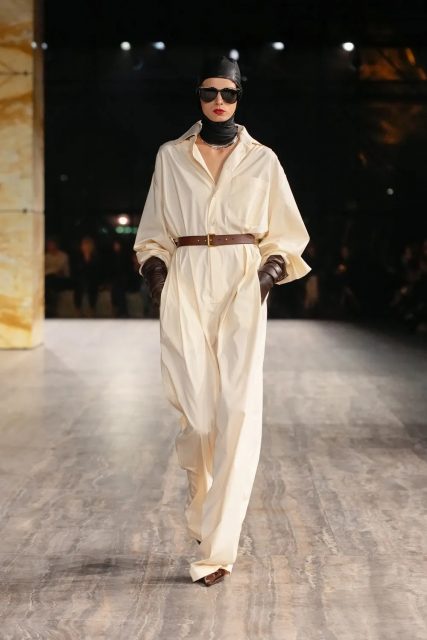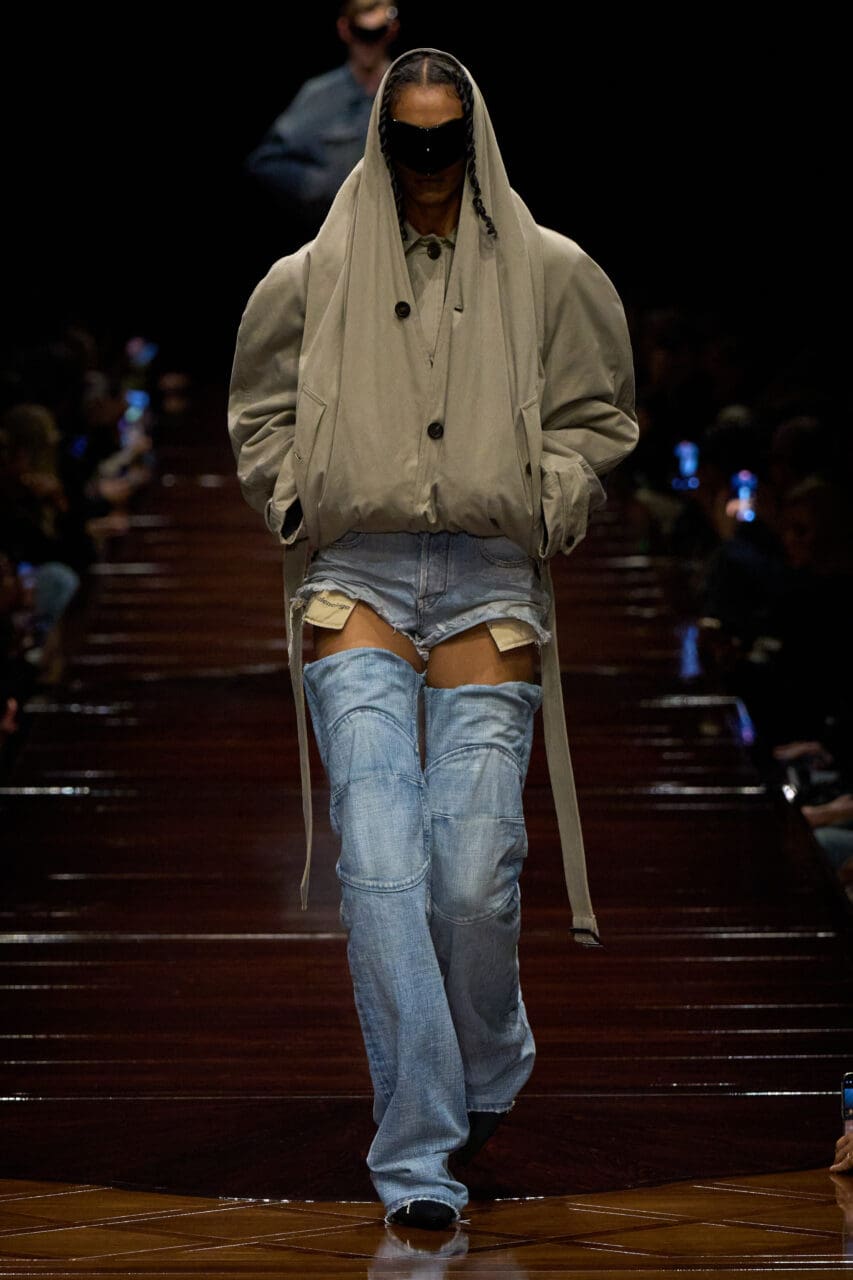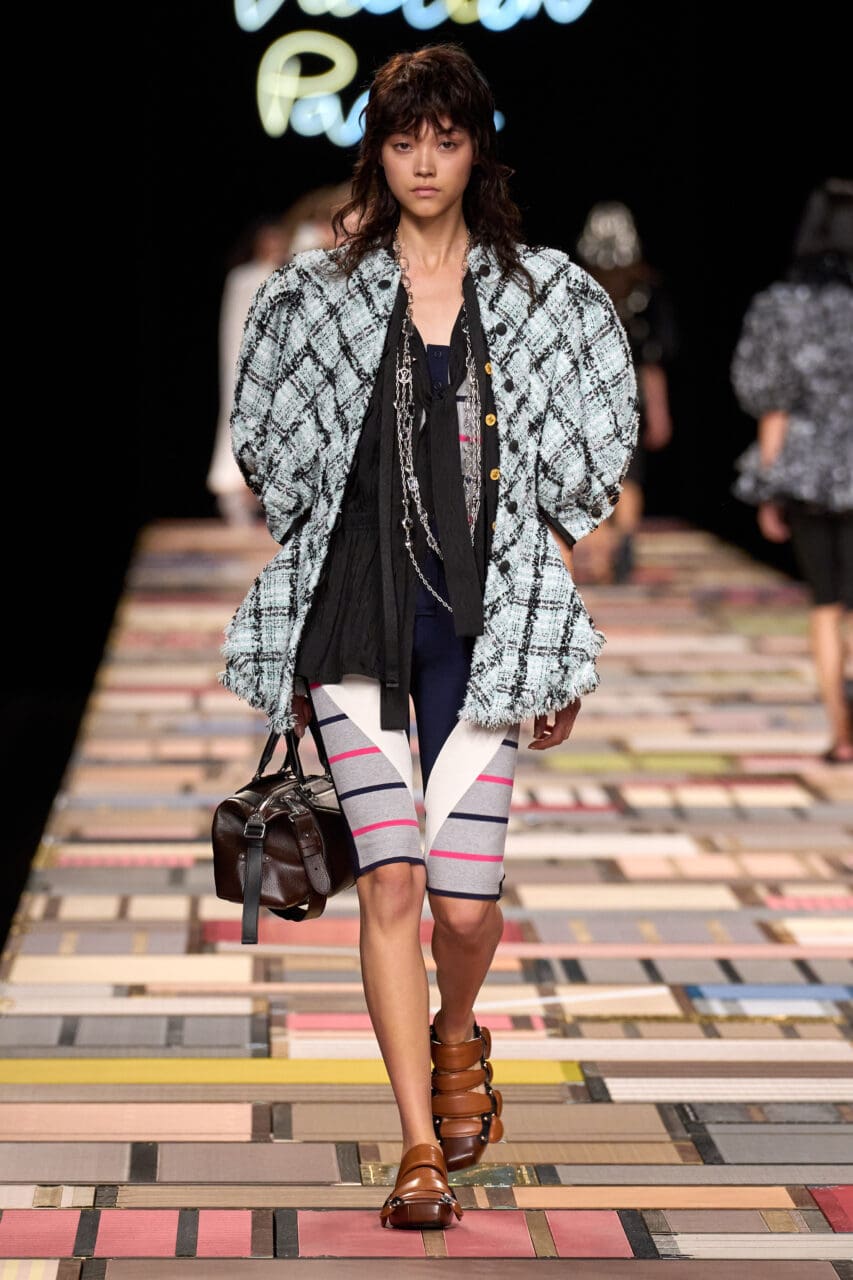Sarah Burton made her finale at Alexander McQueen a visceral act of female symbolism—a collection fiercely true to herself and to all the values, skills, and beauty she’s upheld for 26 years. “This collection is inspired by female anatomy, Queen Elizabeth I, the blood red rose, and Magdalena Abakanowicz, a transgressive and powerful artist who refused ever to compromise her vision,” she wrote in the press statement. “The show is dedicated to Lee Alexander McQueen, whose wish was always to empower women, and to the passion, talent, and loyalty of my team.”
A short black tailored dress, slashed at the bodice, corseted and cross-laced in the back, carried a host of meanings. The surgical cut—a direct reference to Alexander McQueen’s spring 1996 collection The Hunger—was a salute to the very beginning of the house McQueen founded. In the original, the slash was surrounded by a sooty print. In Burton’s version, repeated later surrounded with gold embroidery almost like a religious artifact, it suggested something else: not so much about violence, horror, and hurt, but almost a holy celebration of the ultimate creative power of the female body.
There was no mistaking that reference later. Burton’s tribute to Britishness—the red rose of England—culminated in a pair of dresses at the heart of the collection that were petaled like flowers or vulval folds. She surrounded her ceremonial with the monumental, enveloping power of the textile sculptures of Abakanowicz, a Polish feminist artist: Her forms suggest the embrace of motherhood, vaginas, comfort, and protection.
Armored in leather corsetry, exposed yet supported: Here was Burton’s vision of womanhood, her imprint on the house. It was an emotionally honest farewell that had the audience standing and applauding, while Sarah Burton, for once in her life, made a full circuit of the runway, receiving the accolades and love she so richly deserves.
Editor
Sarah MowerCredit
Lead image: Ik Aldama / Courtesy of Alexander McQueen





